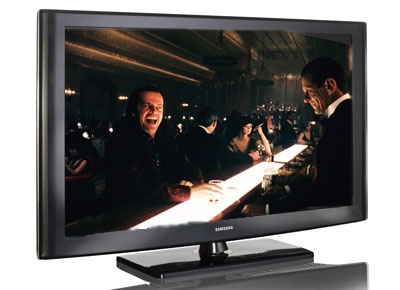Display-Tech Smackdown Page 3

LCD
THE SCIENCE A matrix of thin-film transistors applies voltage to liquid crystal-filled cells sandwiched between two sheets of glass. When hit with an electrical charge, the crystals "untwist" to filter light coming from behind the cells. Each pixel comprises a red, green, and blue cell.
STRENGTHS Sabin: Image quality is advancing rapidly among LCD flat-panels lately, especially with the advent of LED-array backlights that can dim "locally" behind dark areas of the screen to achieve deeper blacks. Response time, color accuracy, picture uniformity (the ability to deliver consistent brightness and color across the screen), and horizontal viewing windows have (for the most part) also improved notably in the latest generation of sets. But the biggest thing LCD may have going for it is that manufacturers are banking on it as the future of mass market television, and have invested mountains of cash in new automated plants that will drive volume up and prices down.
Trei: LCD boasts the widest range of screen sizes, from compact tabletop 13-inchers, to 65-inch-plus room fillers. 1080p resolution is common even in mid-sized models, though the benefits of 1080p with screens under 50 inches are debatable. Most LCDs have matte screen surfaces that are less susceptible to reflections in a brightly lit room, and power consumption is typically less than similarly sized plasmas.
Griffin: LCD picture quality has undoubtedly come a long way in the past year. When you combine that development with the reasonable prices LCD sets command, the technology's broad appeal is understandable.
LCD is also the bright-room TV champ, edging out plasma by a nose when it comes to retaining picture contrast in well-illuminated spaces. And with new developments like LED-backlit LCD panels and ultra-fast refresh rates (180 Hz prototype models were shown at this year's CES), picture performance just keeps getting better and better. Going forward, we'll also see a shrinking of LCD cabinet depth: Hitachi just introduced a series of 1 1/2-inch deep models at CES, and it also displayed an even thinner 3/4-inch prototype with a 32-inch screen.
WEAKNESSES Sabin: Despite the new backlight technologies, LCD's blackest blacks remain a notch below the best plasmas or any OLED, so it can't quite equal those technologies in contrast and image depth. Narrow viewing angles on some models can also still be a problem in rooms with a broad swath of seating, though the best LCDs in this regard have very wide viewing windows.
Trei: Many LCDs lose contrast when you're seated off-axis. While prices are competitive in the 47-inch-and-under range, larger LCDs tend to cost more than equivalent plasmas. Some models are susceptible to motion blur and judder.
Griffin: LCD is currently riding the marketplace popularity wave, but its long-range prospects could be limited. That's because, unlike self-emissive technologies like plasma and LCD that generate their own luminance, LCD display require a backlight. As Hitachi's engineers demonstrated at CES, that backlight can be squeezed into a strikingly thin, 3/4-inch deep frame. But I can't imagine LCD sets ever getting much thinner than that.
DOMINATION POTENTIAL Sabin: With plasma strong technically but fading in the market, and OLED still really a gleam in our collective eye, we can probably count on LCD to eventually take over as the volume leader for HDTV sales.
Trei: LCDs sales dominance has been marching steadily up through the size ranges, and they now control most of the market below 50 inches. Their bright and punchy picture is a real asset on a brightly lit sales floor, even if that doesn't always translate to a better picture in the typical home environment. We'll be watching to see whether OLED can become a serious challenger.
Griffin: LCD delivers a one-two punch of solid picture performance and affordable price. For those reasons alone, LCD TVs are going to find their way into millions of homes over the next few years. But as other technologies - most notably OLED - manage to grow their screen sizes while retaining a wafer-thin form factor, LCD may ultimately get displaced - much in the same way current flat-panel TVs consigned bulky CRT models to the consumer electronics landfill.

























































